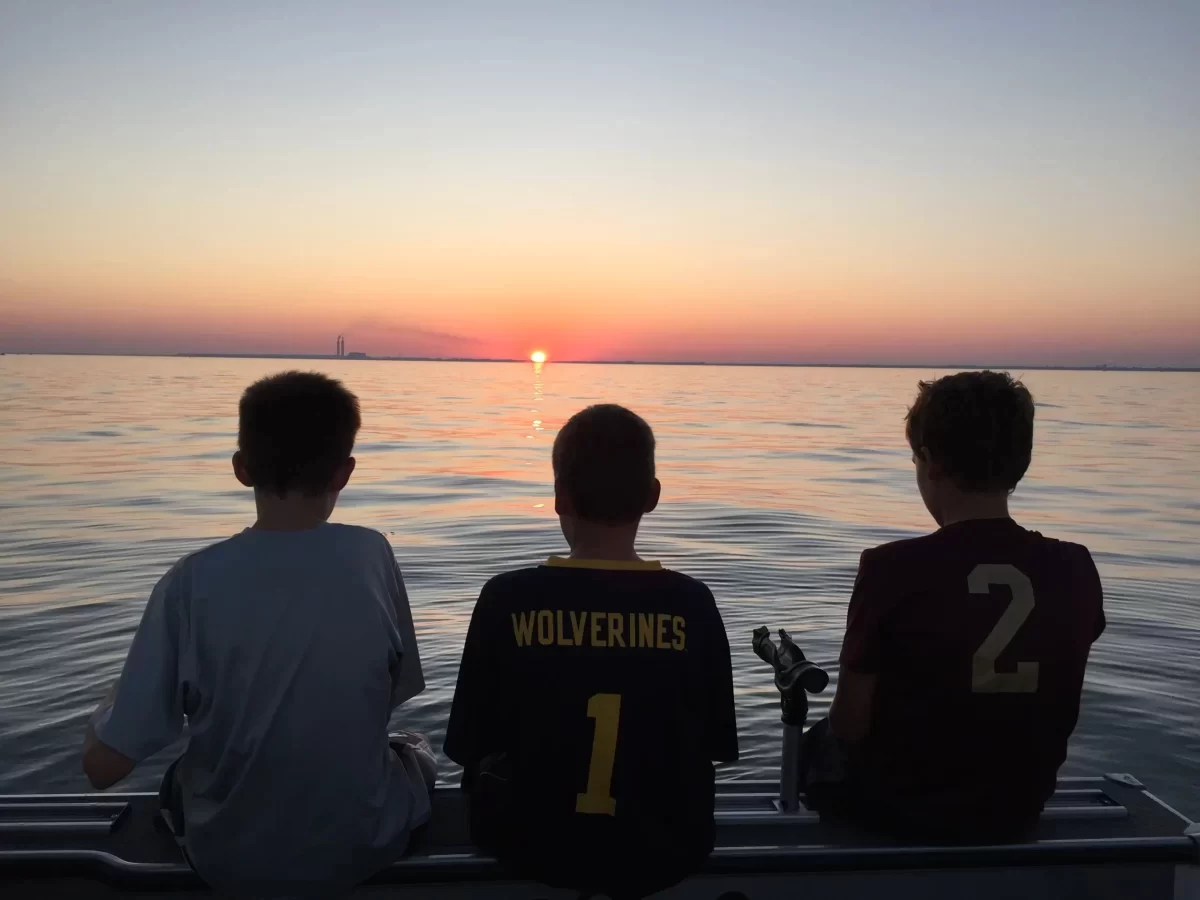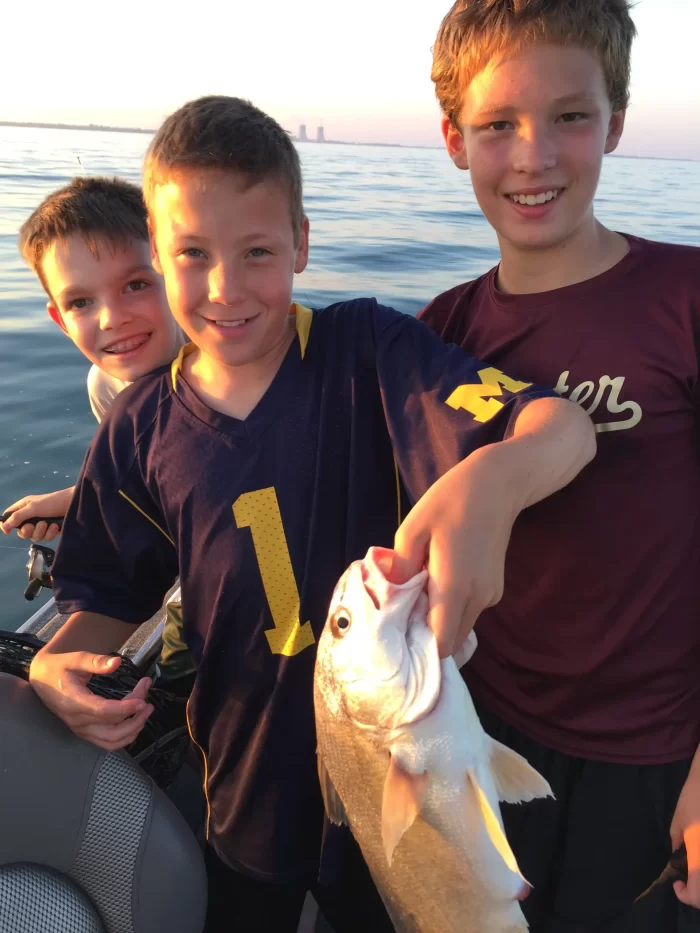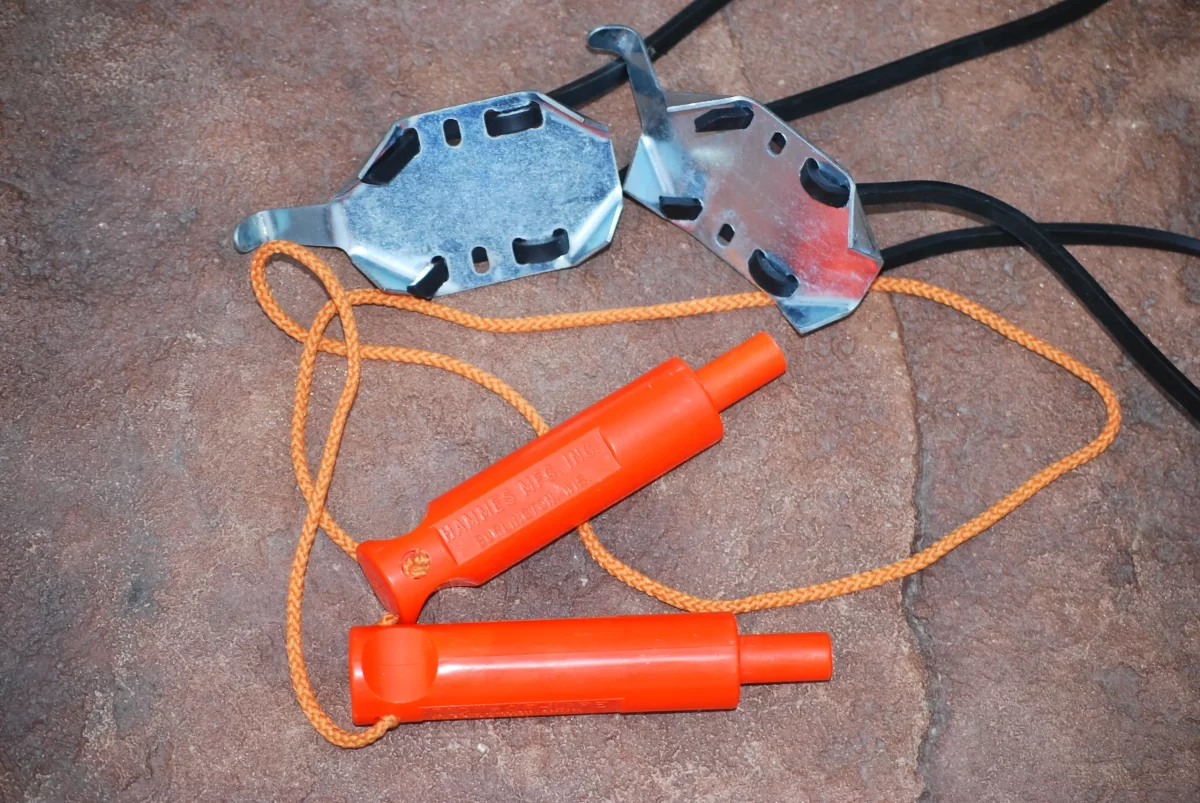A New Year’s Resolution

* This page contains affiliate links. The Great Lakes Fisherman may earn a commission on items purchased through these links. For more on this, please click here.
It’s that time of year when we all take time to reflect on our lives. We take inventory of where we stand and try to find something that we can change in the new year to improve our lives or the lives of others. And if you are still looking for one, we have a great New Year’s resolution for fishermen: Take a
kid fishing! Here, we make the case for why this is so critically important for the future of the outdoors.
The Importance of Conservation
Why is conservation so important to us? What a dumb question, right? The answers seem obvious: clean natural resources, maintaining healthy wildlife populations, keeping plenty of public land available for the outdoors person. But lying just under the surface of all of this is the foundation, the basis, of our strong desire for conservation – the unmatched life experiences that the outdoors provide for us and our families.
We have all had those moments in the outdoors, striking impressions from nature that come in the moments when we least expect them. These impressions usually come to us when our minds and bodies are at ease, and we are immersed in the distinct senses of nature along with the people in our lives that make us the happiest. It is a high that is almost indescribable to those who have never experienced it.
It might be a foggy morning on Lake Michigan, which could be mistaken for an endless plate of glass, waiting for the first salmon reel to sing. It might be that crisp, sunny October morning in the poplars with only the sound of dew dripping from the tress, searching for the first grouse flush of the day. Maybe it’s the anticipation we feel sitting inside an old, musty-smelling deer blind as light breaks on opening day.
Regardless of how or when they hit us, these experiences change our lives forever. We begin to spend endless hours looking for the next one or trying to re-live one prior. The experience can be so intense, that they drive many of us on a life-long quest to recreate these moments for our children and our grandchildren. This is known as legacy and to ensure that it is here for subsequent generations, we must have conservation.
The Modern Threat to Conservation
In the early parts of the 20th century, threats to conservation were becoming obvious. The effects of over hunting and fishing and unregulated pollution from the industrial revolution were glaring. By the time I was a child, growing up in the 1980’s, many laws had already been enacted to protect wildlife populations and clean up the environment. These newer laws would take time to work, however. Even then, I can still remember the distinct smell of the Detroit River throughout most of my childhood years. You always knew when you were within a mile or so of the river because of that odor. In addition, a lure dropped into the water was only visible for a foot or so below the surface. This was a clear indication of just how much was being dumped into the river at that time. Today, that smell is long gone and the water clarity has improved significantly. These are both the signs of an improved ecosystem and a conservation success story.
However, these threats are being replaced by another threat to conservation that is equally concerning – a lack of participation and support. In 2022, the forms of enjoyment that children seek are very different from what they were 40 years ago. Far fewer young people are venturing into the outdoors. Cell phones, video games, and TikTok are threatening future support for conservation and the outdoors. Children are not as exposed to the joys of nature as they once were. This makes them much less likely to get involved with the outdoors as adults. Now more than ever, it is important to expose young people to these experiences.
What Can We Do?
So, what can we do to help ensure the future of conservation? Obviously, financial support is always needed and welcome. But there is another, even more important way of providing support to conservation that is free: Introducing a young person to the outdoors.
It seems cliché, but simply getting a kid out there is the most important step. If you feel like you are not a good enough fisherman or hunter to take a kid along, you are missing the point! The value is in the experience. Success is just icing on the cake. While it helps if the fish are biting or the deer are moving, the experience itself is eye-opening for those who haven’t been out there before.
On more than one occasion, I have introduced kids to fishing only to come back empty-handed and feeling like I had completely failed them. After all, I know how disappointing it feels to come home with an empty live well after a long day on the water. But to my surprise, not only did they have a great time, but in every case, they couldn’t wait to go again! And this brings

us full-circle back to one of the very reasons for conservation – the unmatched life experiences.
A New Year’s Resolution
To help ensure that our outdoors legacy continues, I have a New Year’s resolution for you. While you are sitting in your easy chair with a glass of eggnog this holiday season, planning your favorite outdoor activity in 2023, include a young person in those plans. It can be anything from bluegill fishing to trolling for salmon, from shooting trap to hunting deer. The enjoyment is inherent in the activity. There is nothing better your can do to help ensure the legacy of the outdoors for future generations.
By introducing a kid to the outdoors, you really are lending support to conservation by growing the support base. In addition, you will make some of the best memories for your kids and their friends. What else can provide so much impact to your cause by simply doing what you love with others?
Ice Fishing Preparation & Safety

* This page contains affiliate links. The Great Lakes Fisherman may earn a commission on items purchased through these links. For more on this, please click here.
It’s that time of year when upper Midwest fisherman transition from the soft water to the hard water. For those that aren’t familiar with the term, “hard water” is fisherman speak for ice. This is a true passion for many, with some actually preferring ice fishing to any other.
While ice fishing can be an enjoyable way to spend the cold winter months, proper preparation is necessary to ensure a safe and comfortable day on the ice. Whether you are new to ice fishing or a seasoned veteran, proper preparation is the key.
Ice Thickness and Quality
By far, the most important aspect of ice fishing from a safety perspective is ensuring you are walking or riding on stable ice. While it is virtually impossible to know the stability of ice under the entire lake, there are some things that can be done to greatly increase the odds of breaking through.
1. Be Aware of Moving Water
Flowing water contains more energy than still water. This means that it doesn’t freeze as easily. Make sure you are aware of the locations of any streams, creeks, canals or rivers that may flow into or out of the lake you are fishing. Areas around these inlets or outlets will likely have thinner ice than the rest of the lake.
2. Be Aware of Spring Water
Another thing to mindful of is spring water. Spring water, that is, water that seeps out of the earth, tends to hold in the high 40s to lower 50s. Lakes that have active springs feeding them will tend to have thinner ice in areas around these underwater springs.
3. Check the Ice Before Venturing Out
Be sure to check the ice before getting away from shore. Make sure that you drill or spud a hole. While this doesn’t necessarily represent the whole body of water, it is a good first indication.
4. Don’t Ice Fish Alone
Though tempting it may be, fishing alone can be dangerous. It is wise to go ice fishing with a friend or family member. If you must go alone, be sure to go somewhere where there are other ice fisherman so that in the event of an emergency, you have access to help from others.
5. Don’t Venture Far from the Pack
Staying close to other ice fisherman is important for a couple of reasons. First, if you are new to a body of water, it provides an indication of where the safer ice is. In addition, should you have an emergency, help is not far away.
Safety Gear
There are a few items that every ice fisherman should have when it comes to safety gear. Here is a short list.
1. Ice Awls
Ice awls are essentially ice picks that can be driven into the ice by hand to help provide leverage to pull yourself out should you fall through the ice. Many are designed so that the picks are retracted into a plastic sleeve or housing to prevent you from accidentally spiking yourself. When the awls are slammed downward and into ice, the plastic retracts allowing the steel to penetrate the ice. This allows you to pull yourself out without assistance.
2. Ice Cleats
Walking on a smooth, ice covered surface can be very difficult. And if that ice is wet, not only can it be nearly impossible to walk, but there is serious danger of a slip hazard. This is where ice cleats come in handy. Ice cleats are to your boots what snow chains are to tires. They provide spiked pressure points on the soles of your boots that allow you to walk on the slickest of ice, slip-free.
3. Carry a Whistle
This may seem simple, but a whistle worn around your neck will help you alert others should you have an emergency that requires help. Nothing fancy – but the louder the better.
4. Dress in Proper Attire
An often overlooked safety issue for ice fishermen is frost bite. When you are ice fishing, your hands will eventually get wet with water that is hovering around 32ºF (0ºC). Combine this with even colder winds that blow unobstructed across the lake, and you have a recipe for some dangerously cold fingers. Appropriately rated apparel, including good boots and gloves, are a must for a worry free and comfortable day on the ice.
“But”, you may say, “I have a good shanty and a heater, so I don’t need to worry about having all that stuff on.” As the old saying goes, it is better to have it and not need it, than to need it and not have it. Removing an extra layer is easy if you are getting too warm. But you can put it back on if the temperature drops, the wind picks up, or your heater runs out of fuel.
Following the above tips will help ensure that you have a safe and comfortable day out on the hard water!
